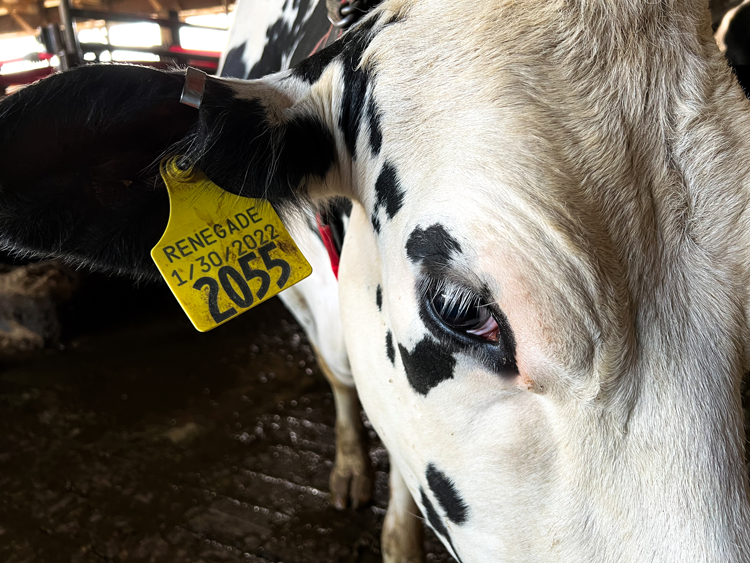
While I was hoping to write about a happier, more fun topic for my blog post this week, I honestly cannot think of anything other than pinkeye as it’s reared its ugly head in our household. While I usually enjoy feeling the breeze on my face and working outside in the sunny, dry conditions this time of year, it has become pretty miserable as my daughter and I try to rid ourselves of this irritating eye infection.
Every year, we tend to have a couple animals to treat for pinkeye; it comes with the territory on a dairy farm. As the flies begin to multiply, they carry and inevitably transmit the disease among a few of our younger calves. This is something we are always on the lookout for, as it is important to notice the early symptoms and treat the ailment immediately to clear it up and avoid any long-term effects to the eyes. One treatment of an infected animal typically clears up pinkeye quickly as long as you catch it right away.
If you’re reading this and you happen to have cattle of your own, this is your friendly reminder to start being extra vigilant and keep a watchful eye out for pinkeye infections in your own herd as summer nears. Luckily, it’s pretty simple to identify and treat in cattle.

While I’m used to dealing with the cattle version of pinkeye, I had never personally experienced pinkeye in humans. That is, until this past week, when our 8-month-old daughter came down with it for the first time and ended up passing it to me. Now, we’re dealing with treating ourselves and trying to rid ourselves of eye discomfort in the windy, dusty conditions we’re currently experiencing during planting season.
If you’ve experienced pinkeye, you have my sympathy. While there are far worse problems out there, it still stinks. We both seem to be on the mend, and I’m crossing my fingers that my husband and other family members haven’t caught it. As we stay busy with fieldwork and regular chores in the coming days and weeks, I’m making sure to spend some extra time washing and disinfecting literally everything we’ve come in contact with in the hope of squelching any chance of catching it again or passing it to another person.

The author dairy farms with her parents and brother near Hawkeye, Iowa. The family milks approximately 300 head of grade Holstein cows at Windsor Valley Dairy LLC — split half and half between a double-eight parallel milking parlor and four robotic milking units. In the spring of 2020, Molly decided to take a leap and fully embrace her love for the industry by returning full time to her family’s dairy.